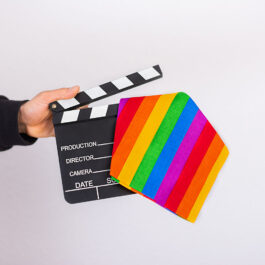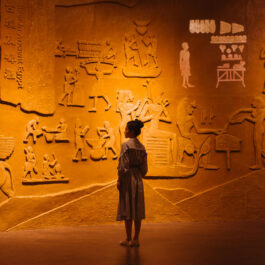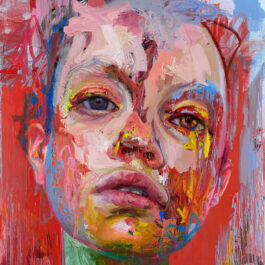One of the ways we find ourselves as we grow up is by discovering heroes in our favourite stories – which nowadays often means movies and TV. If you ever turned a bedsheet into a cape as a child, or made a stick into a magic wand, it’s likely you were imitating something you saw in a film. Cinema of all genres can help us find out where we fit in, but what if you look up at the screen and don’t see yourself in anyone?
In the past few years, many historically underrepresented groups have sought to demand equality in various industries, including Hollywood. The need for more characters of different cultures, ethnicities, sexualities and genders became increasingly urgent, with social media lending cinema-goers a more powerful voice. One of the many phenomena to emerge from this movement is the Bechdel test, an informal metric that has become a byword for gender equality in movies, which may have helped change the way we view the medium forever.
A Tough Test To Pass
In 1985, American author Alison Bechdel created a story in her recurring comic strip Dykes to Watch Out For. Titled ‘The Rule’, it was inspired by her friend Liz Wallace, and featured two unnamed women as they consider going to watch a movie. One woman says to the other: “I have this rule, see. I only go to a movie if it satisfies three basic requirements. One, it has to have at least two women in it who, two, talk to each other about, three, something other than a man.”
When her friend mentions the strictness of the idea, the woman replies: “No kidding. The last movie I was able to see was Alien.” (A film released six years before the story.)
It was an astute comment for the time; that year, the top ten movies in America all starred men, often in action-heavy plots with underdeveloped female characters. In the late 2000s, the story was picked up on as the demand for more diversity in cinema gained pace. Dubbed ‘the Bechdel test’, movie fans started to use it as a means of pointing out the male bias in Hollywood storytelling. The simple question of whether there are two female characters who talk to each other about something other than a man became a very telling critique of the kind of movies that were being made by major studios. By the 2010s, it had become a regular part of film criticism and discourse, used by feminist cinephiles as a byword for the inclusion of women’s voices.
The popularity of the comic strip also coincided with Bechdel’s growing mainstream reputation as a respected feminist writer. A cartoonist for LGBTQ+ newspapers, it was the publication of her graphic novel Fun Home in 2006 that introduced her to a wider audience, many of whom would discover her earlier work. Fun Home, an autobiographical story of her family life and an exploration of sexuality, was turned into a Broadway musical and, along with her 2012 memoir Are You My Mother, solidified Bechdel as an influential voice for women around the world.
The Bechdel Test In Action
So, how does the test apply in practice? What type of movie would those characters be able to see today? The website BechdelTest.com keeps a record of popular Hollywood films and whether they meet the requirements (adding that the two female characters should also be named).
In 2021, the two friends would be able to head along to Marvel action movie Black Widow, which starred Scarlett Johansson and focussed heavily on her relationship with her sister Yelena (Florence Pugh).
They could enjoy comedy The French Dispatch and musical In the Heights, but would have to steer clear of Ryan Reynolds comedy Free Guy, and James Bond blockbuster No Time to Die. Despite many female characters, including a new female 007, this move toward diversity for the franchise didn’t actually show two women meaningfully talking about something other than James Bond.
Using conversation starters such as this test to fuel the drive for reform, material changes have occurred in the types of films we see; the Marvel and Star Wars universes cast their first female leads in the last few years, while a demand for more women working behind the scenes has given filmmakers like Chloé Zhao and Patty Jenkins a platform to take on the ambitious projects that are historically male dominated.
The annual Hollywood Diversity Report showed that in 2020, women accounted for just under 48% of lead characters in Hollywood movies. It’s progress – that number was just over 25% in 2011 – but there’s still ground to cover, with the report also finding films with female leads had less financial backing than those with men.
It must be noted that the Bechdel test is not intended as a measure of quality. Critics of the test have argued that such broad parameters mean a film can ‘pass’ without necessarily being a good film. For example, using only the Bechdel test as a metric, a story set in an all-female school or convent would immediately be considered superior to The Godfather, which would ‘fail’. This is where the most important aspect of the Bechdel test’s influence comes into play: it’s about highlighting gender disparity across modern filmmaking, rather than assessing the merits of individual films.
When used across the whole cinematic landscape, it is a simple but effective tool for showing how cinema has improved, or regressed. The more films, good or bad, that can meet the expectations of the test, the better idea we have of the variety of stories being told.
An Accidental Success
Alison Bechdel will be the first to admit surprise at being thrust into the centre of an industry she isn’t even part of. The cartoonist and playwright hasn’t worked in films, and she intended the cartoon in question to be merely a witty observation about the male-centric state of movies. “I feel sort of funny about that whole thing because it wasn’t like I said, ‘This is the Bechdel test, and now you must follow it,’” she said in a 2015 interview with Vulture. “It’s not conclusive or definitive. It’s not meant as a serious metric.”
She has, however, supported its larger goal of provoking debate about sexism in cinema. “I’ve made peace with it,” she told Stylist in 2019. “I’m actually very happy about it, because I feel like the general idea – that women should be treated as fully human people in a movie, just as they should be in life – is a really good idea.”
There are still many imbalances to be addressed in terms of gender, sexuality and racial representation in mainstream cinema, but the Bechdel test has prompted a discussion that has led to action. Reports and tools with more complex metrics are being developed to hold productions accountable. The Geena Davis Institute for Gender in Media, founded by the Thelma and Louise star, has teamed with Google to develop automated systems the Inclusion Quotient and Spellcheck for Bias, which measure representation and stereotyping in media. Likewise, the online film bible IMDB introduced the F rating in the mid-2010s, as a way of easily identifying female representation in front of and behind the camera.
At the box office and the awards podium, change is also beginning to show. 60% of the top-grossing movies in 2021 passed the Bechdel test, implying that equality is slowly resulting in more successful movies. Culturally, the success of films like Frozen, Moana and Encanto have shown a desire for a historically narrow archetype like Disney princesses to be layered, with more to do than just wait for a prince to save them.
At the Oscars, six out of ten of this year’s Best Picture nominated films passed the test, and the film made by the female Best Director nominee, Jane Campion’s drama The Power of the Dog, leads the nominations for the 2022 ceremony. Last year, Chloé Zhao became the first woman of colour to win Best Director for her film Nomadland.
The Bechdel test changed Hollywood not by offering a system for judging movies, but by highlighting a problem in a way that anybody with a play button can investigate for themselves. It has helped us to realise there’s more than one screen in most movie theatres, as well as endless room in our streaming queues, so why should we settle for one type of hero in our stories?
If we continue on the right track, the Bechdel test will one day become an artefact from a less equal past. Until then, it serves as a reminder that there is more yet to do.














Sorry, the comment form is closed at this time.